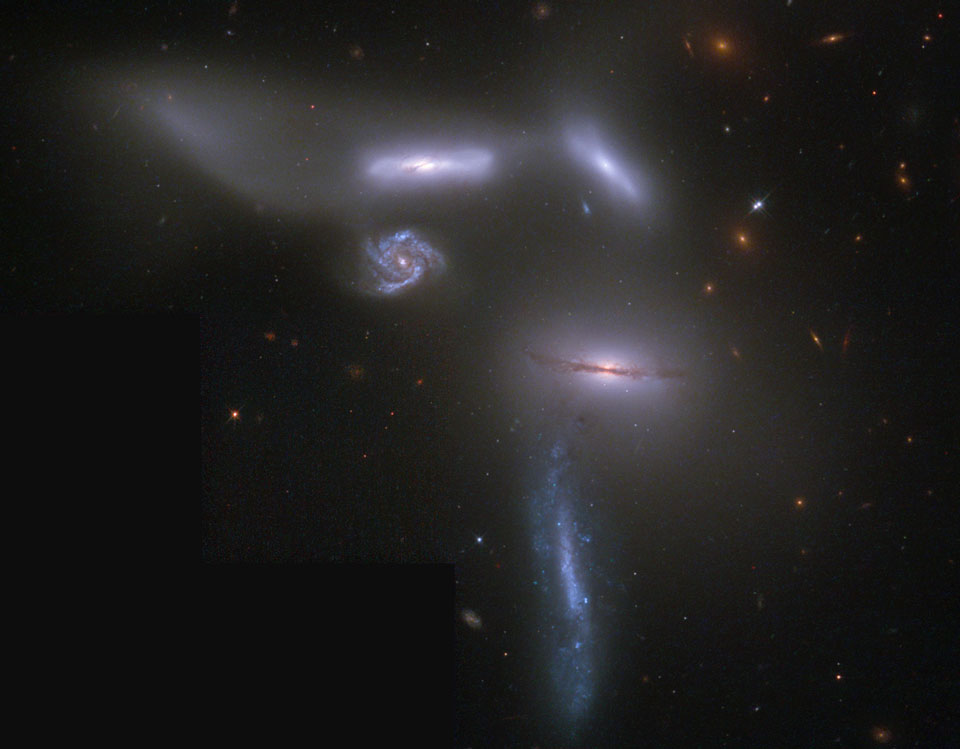 |
| Seyfert's Sextet image NOAO |
The accompanying image shows labeling and redshifts expressed in speeds km/s. While most redshifts in the sextet are in the range 4017 km/s - 4482 km/s there is one odd galaxy in the center with the speed of 19813 km/s. This is another story, altogether.
Always ready for new adventures in Science, aren't we!
"Five of the members show very similar redshifts, from 4000 to 4500 km/s, while the fifth is measured at nearly 20000 km/s. Conventional wisdom argues that this is a chance projection of a distant background galaxy: some would have otherwise and require a complete rethink of modern cosmology and the introduction of completely new physics."
 |
| Image NOAO |
Always ready for new adventures in Science, aren't we!
"Five of the members show very similar redshifts, from 4000 to 4500 km/s, while the fifth is measured at nearly 20000 km/s. Conventional wisdom argues that this is a chance projection of a distant background galaxy: some would have otherwise and require a complete rethink of modern cosmology and the introduction of completely new physics."
Well, such complete rethink of modern cosmology etc. has happened - an exception, anomaly in observed data that challenges generally accepted theories and at the end smashing them. So who will win in this case, classic redshift physics or human mind generating a new theory explaining the strange redshift reading for the sixth object in Seyfert's Sextet?
Well, let's take a closer look at the sextet taken by a camera located above Earth's distorting atmosphere.
 |
| Seyfert's Sextet NASA APOD |
- the small face-on spiral galaxy lies in the distant background and appears only by chance aligned with the main group.
- Also, the prominent condensation on the upper left is likely not a separate galaxy at all, but a tidal tail of stars flung out by the galaxies' gravitational interactions." (APOD)
What you see is what you get - the sextet turns out to be a quartet!
As for classic redshift physics, common wisdom has survived this challenge and demonstrated once again the value of optical spectrometry to Astronomy!
No comments:
Post a Comment